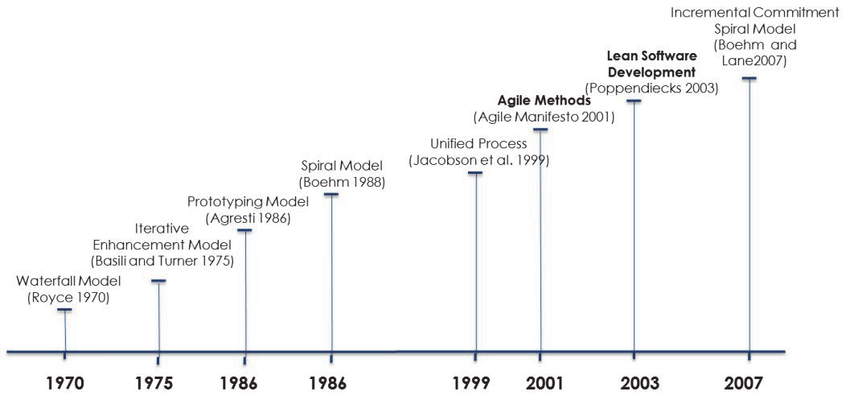Balancing Quality and Speed: Setting Realistic Expectations for Your Software Development Timeline

Software Development Timeline
The Importance of a Realistic Timeline
A realistic software development timeline is essential for the success of any software project. It sets the stage for clear communication, efficient resource allocation, and the timely delivery of a high-quality product. Unrealistic timelines can lead to rushed work, increased errors, and ultimately, project failure. Several key factors influence the software development timeline, including:
-
Project Scope: The size and complexity of the project determine the amount of work required. A detailed project scope outlines the functionalities, features, and deliverables. Complex projects with intricate features and multiple integrations naturally require more time compared to simpler projects.
-
Technology Stack: The choice of technology stack can significantly impact development speed and efficiency. Some technologies and frameworks are more suited for rapid development, while others might offer better performance or security but require more time to implement. Selecting the right stack based on project needs is crucial for maintaining the timeline.
-
Team Expertise: The skill level and experience of the software development team structure play a critical role in how quickly and efficiently a project can be completed. Experienced teams familiar with the chosen technology stack and project type can work more efficiently and solve problems faster, ensuring smoother project progression.
-
Client Requirements: Changes in client requirements can lead to scope creep, affecting the timeline. Clear, upfront communication and requirement gathering are essential. However, flexibility must be maintained to accommodate necessary changes without drastically impacting the overall schedule.
-
Testing and Quality Assurance: Rigorous testing is essential to ensure the final product is bug-free and meets quality standards. This includes unit tests, integration tests, and user acceptance tests. Allocating sufficient time for thorough testing helps in identifying and fixing issues early, preventing delays in the later stages of development.
Creating a suitable timeline for software development planning is essential to ensure long-term benefits.

Creating suitable software development timeline is essential
Best Practices for Balancing Quality and Speed in Software Development
Balancing quality and speed is a perennial challenge in software development. By adopting strategic practices, teams can ensure they deliver robust, high-performing solutions without unnecessary delays. Below are actionable insights that empower development teams to strike the right balance, meeting both user expectations and business objectives.
Define Clear Objectives and Requirements
Starting with clear objectives is critical to project success. Detailed discussions with stakeholders help establish the project scope, key features, and functionalities. This clarity minimizes ambiguities, sets realistic timelines, and prevents miscommunication during development. For example, in a complex e-commerce platform, specifying whether the initial phase includes payment integrations or advanced analytics ensures a focused approach.
Prioritize Features and Create a Product Roadmap
Every feature is not created equal. By categorizing features based on their importance to users and business impact, teams can focus on delivering high-value functionality first. A meticulously designed product roadmap further segments development into manageable phases. This approach supports incremental releases, where each iteration delivers tangible results, helping businesses validate ideas and gain user feedback early.
Adopt Agile Methodologies
Agile frameworks like Scrum and Kanban provide the flexibility necessary for iterative development. Dividing the project into smaller tasks and delivering in short sprints enables teams to adapt to evolving requirements without sacrificing quality. Agile’s emphasis on regular feedback ensures continuous improvement, allowing adjustments that align with stakeholder priorities. For instance, a startup launching a mobile app can use Agile to refine features based on beta user input while maintaining delivery timelines.
Implement Continuous Integration and Continuous Deployment (CI/CD)
CI/CD practices are transformative in balancing speed and quality. Continuous Integration ensures that code changes are frequently merged and tested, reducing integration risks. Meanwhile, Continuous Deployment automates software releases, enabling rapid and reliable updates. For example, a fintech company deploying CI/CD can maintain high availability while rolling out security patches or feature enhancements seamlessly.
Conduct Rigorous Code Reviews and Testing
Code reviews act as a safety net, catching bugs and fostering team collaboration. Regular software testing—including unit, integration, and user acceptance testing—ensures the software performs as expected under various scenarios. For instance, a healthcare application undergoing thorough testing can guarantee compliance with industry software compliance standards while delivering a flawless user experience.
Manage Scope Creep
Scope creep, the silent project killer, arises when unplanned features are added indiscriminately. Establishing a structured change control process allows teams to evaluate the feasibility of new requests. By prioritizing changes that align with project goals, developers can prevent delays and budget overruns. This approach is especially crucial in industries like enterprise software, where stakeholder demands can shift frequently.
Set Milestones and Monitor Progress
Milestones act as guideposts, offering teams a clear path to track progress and measure success. Regularly reviewing these checkpoints allows teams to identify bottlenecks and recalibrate plans as necessary. For example, in a SaaS product rollout, milestones like achieving beta readiness or completing user onboarding flows ensure the project remains on schedule.
Communicate Transparently with Stakeholders
Transparency builds trust and keeps everyone aligned. Regular updates about progress, challenges, and adjustments create a collaborative atmosphere where stakeholders feel informed and engaged. Whether it’s a weekly sprint review or a detailed monthly report, effective communication ensures that expectations are managed, and surprises are minimized.
Case Studies: Software Development Timeline in Reality
Case Study 1: Healthcare App Development for an Australian Medical Center
Challenge: An Australian medical center required a healthcare app with advanced features like real-time patient monitoring and data analytics. The initial timeline was aggressive, risking quality compromise.
Solution: Savvycom implemented Agile methodologies, prioritizing critical features and adopting CI/CD practices. Regular code reviews and rigorous testing ensured high-quality standards.
Outcome: The project was delivered on time with all critical features, receiving positive feedback for its reliability and performance.
Case Study 2: E-commerce Platform for a Leading US Retailer
Challenge: A leading US retailer required a robust e-commerce platform with a short timeline to meet market demands. Scope creep became a significant issue due to changing requirements.
Solution: Savvycom established a change control process and set clear milestones. Frequent stakeholder meetings ensured transparent communication and timely adjustments.
Outcome: The e-commerce platform was launched successfully, meeting all requirements and maintaining high quality.
Case Study 3: AI Integration for a Singaporean Tech Firm
Challenge: A Singaporean tech firm aimed to integrate AI capabilities into their existing software, with a tight deadline and high expectations for accuracy and performance.
Solution: Savvycom utilized continuous integration and deployment to streamline the process. Regular testing and iterative development allowed for continuous improvements.
Outcome: The AI integration was completed on schedule, significantly enhancing the software’s functionality and user experience.

Software development timeline is important for longterm benefits
Frequently Asked Questions
How do I set realistic timelines for my software development project?
Start by defining project scope, technology stack, and team capacity. Break down tasks, set milestones, and monitor progress regularly. Don’t forget to include buffer time for changes.
What is scope creep, and how can it be managed?
Scope creep happens when new requirements are added without adjusting time or budget. Prevent it with a clear change control process and regular stakeholder communication.
How can Agile methodologies help in balancing quality and speed?
Agile promotes iterative development, enabling teams to deliver value faster and adapt to change while ensuring continuous testing and stakeholder feedback.
What role does testing play in maintaining quality?
Testing identifies issues early, reduces bugs, and ensures the software meets user expectations. Include unit, integration, and user acceptance testing in your QA plan.
How can CI/CD improve software development timelines?
CI/CD automates testing and deployment, reduces integration issues, and enables faster, more reliable delivery of updates, aligning perfectly with Agile workflows.
For a deeper dive into How To Estimate Software Development Timeline, watch this informative video:
Conclusion
Balancing quality and speed in the software development timeline requires a strategic approach and adherence to best practices. By setting realistic expectations and leveraging methodologies like Agile and CI/CD, businesses can achieve timely delivery without compromising on quality. Staying informed about software development trends and continually refining your software development types and models will also aid in enhancing the software development process for future projects. For any assistance with software maintenance, software audits, or exploring software development ideas, feel free to reach out.
Tech Consulting, End-to-End Product Development, Cloud & Software Development Service! Since 2009, Savvycom has been harnessing digital technologies for the benefit of businesses, mid and large enterprises, and startups across the variety of industries. We can help you to build high-quality software solutions and products as well as deliver a wide range of related professional services.
Savvycom is right where you need. Contact us now for further consultation:
- Phone: +84 24 3202 9222
- Hotline: +1 408 663 8600 (US); +612 8006 1349 (AUS); +84 32 675 2886 (VN)
- Email: [email protected]


